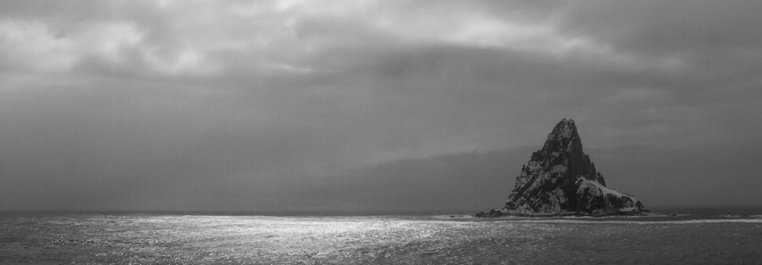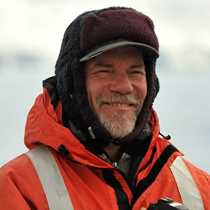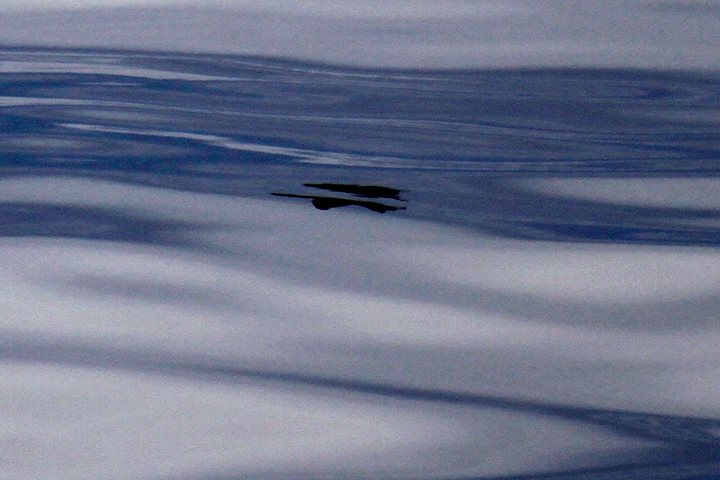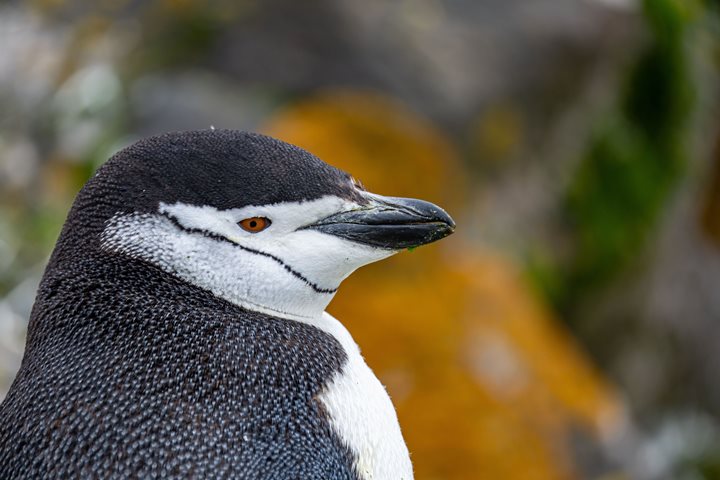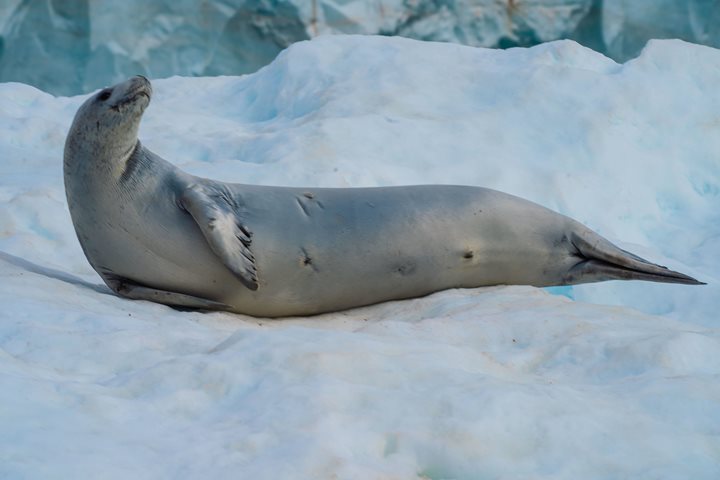Our lucky crossing of the Drake Passage, defying the forecast conditions again, finished late this morning as the ragged peaks and glaciers of Elephant Island slowly emerged from the mist and clouds ahead of the ship. We came in on the north coast of the island and made our way directly to Point Wild, the site of Shackleton’s desperate bivouac from which he set out in the James Caird for the last-ditch crossing to South Georgia.
Wild indeed! The point was named for Frank Wild, the captain of the Endurance, but the name seemed to us a very apt description of the place. We came out on to the foredeck for close looks at this historic site and were immediately greeted by strong icy winds, sea spray and occasional snow flurries that made us huddle into our parkas and shelter from the wind wherever we could. It was hard to imagine that this was mid-summer and Shackleton’s party was there through a long, terrible winter.
Captain Kruess brought National Geographic Explorer deep into the small bay west of Point Wild, right to the foot of the glacier, using all the maneuvering abilities of the ship to get us the best possible vantage point. While Eduardo told us the story of the men’s experience here we searched the rocky shore at the corner of the bay and were able to make out through the mist and spray the little plinth that holds the statue of Captain Pardo of the Yelcho, the Chilean ship that finally succeeded in rescuing the men Shackleton had left behind.
The vertical mountains of black rock and ice that form the backdrop of the bay were a thrilling introduction to the scenery of the Antarctic, cloaked in shreds of cloud and full of wild beauty. But, for many of us, our thoughts were mostly on the incredible story of survival that took place here a century ago. It was deeply moving to contemplate the despair and elation that must have filled these men’s hearts as they struggled to make their way through a journey so different from the one we are enjoying on our warm and comfortable ship.

